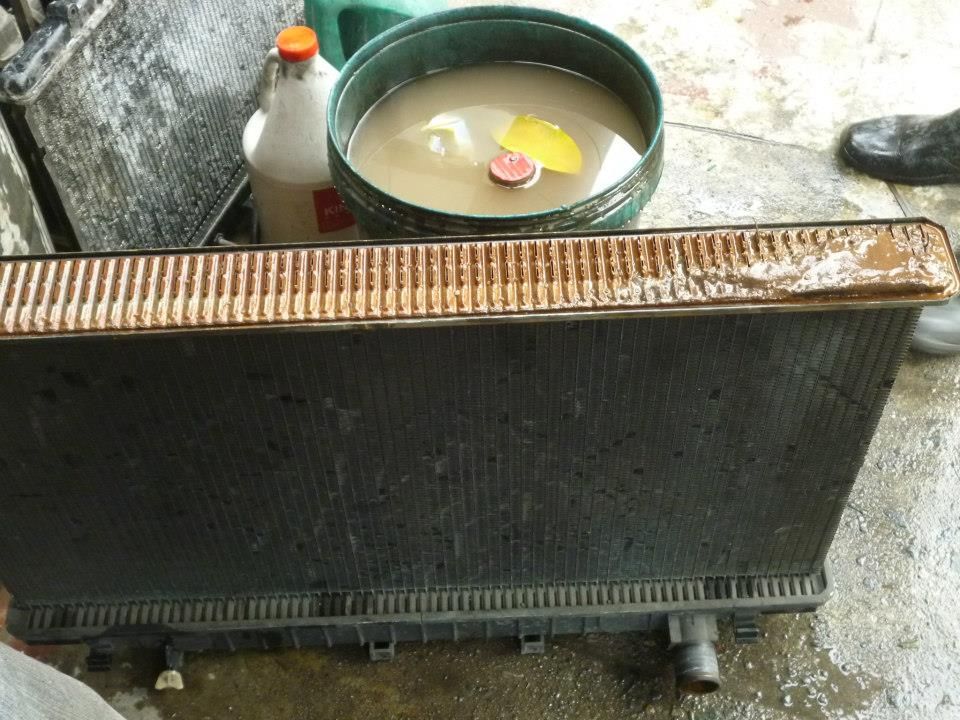Results 41 to 50 of 287
-
June 5th, 2017 09:04 AM #41
why do radiators explode (or sumasabog as a fellow tsikoteer describes it in the other thread ) during hard driving ?
given our fellow tsikoteer's rig was already long in the tooth (pajero fm), why did its radiator explode while traversing the tplex at a high speed? and wouldn't it have shown some symptoms or tell tale signs before it gave way violently?
-
 Tsikoteer
Tsikoteer

- Join Date
- Mar 2008
- Posts
- 54,201
June 5th, 2017 09:28 AM #42wear and tear, po. with a little bit of forgetfulness thrown in.
radiators swell and contract, with every drive.
eventually, they simply get too old and weak, and they just spring a leak, or burst at the seams.
in some instances, it was the radiator cap that gave up the ghost because there was very little coolant inside, and whatever coolant was in there, became super-heated steam.
in my case, my needle was going too hot, and when i looked at the engine bay, i saw my coolant reservoir boiling... because my aux fan was dying..
if the car used to be driven in a temperate country where water froze during the winter, that radiator may have been subjected to greater swings in temperature and pressure, and in all likelihood, more prone to rupture.
i have this qaqilala.. it was an older car, and it never occured to him to check the coolant, after two years...Last edited by dr. d; June 5th, 2017 at 09:52 AM.
-
 BANNED BANNED BANNED
BANNED BANNED BANNED

- Join Date
- Jan 2015
- Posts
- 4,580
June 5th, 2017 12:12 PM #43good question, bro.
i have other cars, but i find the FM unusually hot. i was advised by Mitsubishi to monitor the auxiliary fan because it's almost always the cause of overheating, especially if what is installed isn't OEM. and that auxiliary fan is worth Php12,000 more or less.
-
June 5th, 2017 01:47 PM #44
My very old Mitsu's radiator burst when the auxiliary fan died.
Sent from my SM-T705 using Tsikot Forums mobile app
-
June 5th, 2017 03:19 PM #45
Pressure mounts when temperature rises, too much of it result in bursting the radiator pipes
Combusting fuel heats up the engine, burn much fuel in a short span of time by flooring the accelerator to speed up to 160kph after a considerable drive, that completes the recipe for disaster. Fuel, rise in temperature, pressure mount and finally the disaster
Additional contributors would be sticky engine oil, failing auxillary fan all add up to the heat of the engine
The number one enemy of an engine is HEAT because of its built, metal. Metals liquefy under extreme heat
Radiators are made of aluminum and it melts much quicker than steel iron
Sent from my GT-P3110 using Tsikot Forums mobile appLast edited by kisshmet; June 5th, 2017 at 03:57 PM.
-
June 5th, 2017 10:58 PM #46
I think meron ng mga micro cracks yung top or bottom cover ng radiator niya since plastic yung original na cover ng FM. Yung pressure build up ng makina since hinatak niya maigi yung rig niya sa plastic cover lumabas since meron mga crack.
Hindi niya pa kabisado yung FM niya since bago lang ito sa kanya.
-
June 6th, 2017 12:33 PM #47
^well plastic is less rigid than metal thats why its the first to crack under pressure

Sent from my GT-P3110 using Tsikot Forums mobile app
-
June 6th, 2017 12:42 PM #48
thanks for enlightening me

so my next question is: are there any tell tale signs if your radiator have micro cracks on it already?Last edited by baludoy; June 6th, 2017 at 02:17 PM.
-
 Tsikoteer
Tsikoteer

- Join Date
- Mar 2008
- Posts
- 54,201
-
June 6th, 2017 01:23 PM #50
Visual inspection is good.
With a high mileage or old vehicle that's still using it's original radiator, better to take it down for a general service and inspection. Using coolant also helps as seepage can be seen with the residue that gets left behind.
Here's what the radiator of our LC80 looked like a few years ago, when we had the radiator shop take it down for service and inspection (the LC was at least 15 years old that time).

Last edited by vinj; June 6th, 2017 at 01:29 PM.



 Reply With Quote
Reply With Quote






Dati kasi, Sojitz Corp ang distributor ng Geely locally, ngayon Geely Motor Philippines Corp....
BYD Philippines